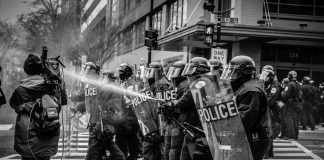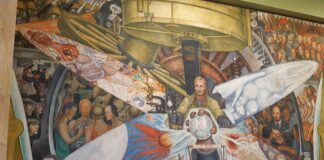
Socialistisk Biblioteks Tidslinje med links til begivenheder og personer i 1902.
Se også Index over personer, organisationer/partier og værker (som bøger, malerier, mm.), steder, begivenheder, mv., der er omtalt på hele Tidslinjen, titler og indhold på emnelisterne osv.
[sta_anchor id=”19020111″ /]
11. januar 1902
Den danske sociale forfatter forfatter Johannes Wulff fødes i København (dør 29. december 1980)
Se:
Johannes Wulff (Denstoredanske.dk)
Johannes Wulff (Gravsted.dk)
Johannes Wulff. Af Marie Hvidt (Dansk Biografisk Leksikon). Længere artikel.
[sta_anchor id=”19020215″ /]
15. februar 1902
Tidligere trafikminister, medstifter af dagbladet Politiken og antimilitaristisk politiker Viggo Hørup dør i København. (Født 22. maj 1841, se denne)
[sta_anchor id=”19020227″ /]
27. februar 1902
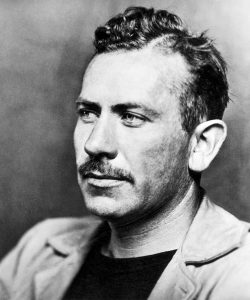
Den amerikanske sociale forfatter John Steinbeck fødes i Salinas, Californien. (Dør 20. december 1968 i New York), forfatter til bl.a. Vredens druer (14. april 1939). Fik Nobelpris i litteratur 1962.
På dansk:
- John Steinbeck. Af Samuel Krygier (Forfatterweb)
- John Steinbeck. Af Thorkild Brunsborg (Litteratursiden.dk)
- John Steinbeck (Spartacus Educational)
- John Steinbeck (Wikipedia.org)
- The Grapes of Wrath (Wikipedia.org)
“Tell’em straight what a strike means”: strejken, strejkeromanen og John Stenbecks In Dubious Battle (pdf). Af Nicklas Freisleben Lund (Arbejderhistorie, nr.2, 2020, s.9-35). “Via analysen af John Steinbecks In Dubious Battle* (1936) demonstrerer artiklen, hvordan strejkeromanen tilbyder et perspektivrigt blik på strejkens historie og løber hovedet mod et stadigt presserende spørgsmål: Hvad vil det sige at agere politisk?” * dansk: Det ukuelige sind (Gyldendal, 1940, 289 s.).**
** se også under kapitlet LITTERATUR nedenfor om bogen, mærket **
In Dubious Battle – 2016 Drama Movie – International Trailer (2:26 min.). “James Franco directs and stars in an adaptation of Pulitzer Prize-winning author John Steinbeck’s 1936 novel of the same name. Set in California during the Great Depression, “In Dubious Battle” follows Mac McLeod (James Franco) and Jim Nolan (Nat Wolff).In Dubious Battle (2016) – IMDb
‘Vredens druer’ lever stadig. Af Tonny Vorm (Information.dk, 11. april 2014). “I dag, hvor nationens moralske kurs, det sociale system og storkapitalens ansvar igen er til diskussion, vender mange sig mod denne klassiker.”
John Steinbeck – en aktuel arbejderforfatter. Af Bjarne Nielsen (Arbejderen.dk, 5. marts 2013). “Den amerikanske forfatter John Steinbeck, som er født i 1902, kunne skrive om klassekamp og solidaritet med stor indlevelse og overdådig humor.”
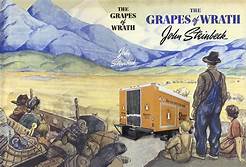
Articles in English:
John Steinbeck’s ‘Of Mice and Men’, eighty years on. By Barry Healy (Links: International Journal of Socialist Renewal, September 23, 2017). Review of John Steinbeck’s book (Penguin, 1993; first published 1937). ” At less than 200 pages it carries enormous force as a mythic account of alienation under US capitalism.” See also: Of Mice and Men (The Censorship Files, November 15, 2016).
Revisiting John Steinbeck’s A Russian Journal from 1948. By Clara Weiss (World Socialist Web Site, 21 March 2017). “Together with photographer Robert Capa, Steinbeck visited the Soviet Union in 1947 at the very outset of the Cold War.”
Steinbeck’s Red Devils. By Louis Proyect (CounterPunch, February 17, 2017). Review of In Dubious Battle [Det ukuelige sind] (book/film): “For Steinbeck, the strikers and the vigilantes are depicted as combatants using force on each other and little else.”
The legacy of John Steinbeck. By Dick Meister (ZNet, April 22, 2014). “It’s the 75th anniversary of John Steinbeck’s The Grapes of Wrath, a good time to note the author’s vital role in helping win social and economic justice for America’s perpetually oppressed farm workers.”
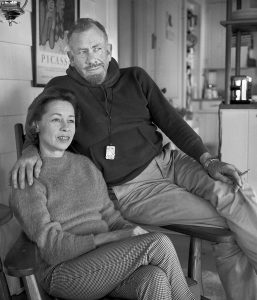
Classic read: The Grapes of Wrath. By Paul Lloyd (Socialist Review, Issue 369, May 2012). “When the book was published it was denounced as ‘communist propaganda’ and in some areas of California was burnt.”
John Steinbeck: Angry voice of US 1930s depression. By Moira Nolan (Socialist Worker, UK, Issue 1790, 9 March 2002). “His work is at its most powerful when it chronicles the injustice and oppression suffered by thousands of US workers during the Depression of the 1930s.”
Steinbeck: Poet of the dust bowl. By David Rapkin (Socialist Worker, US, Issue 397, March 8, 2002). “David Rapkin explains how Steinbeck gave voice to workers’ struggles during the Great Depression and expressed hope for a better world.”
Rethinking the politics of The Grapes of Wrath. By Charles Cunningham (Cultural Logic, Vol.5, 2002; online at Internet Archive). “Paradoxically, The Grapes of Wrath is both an exemplary radical analysis of the exploitation of agricultural workers and the culmination in the thirties of an implicitly racist focus on whites as victims.”
The long retreat of John Steinbeck. By Phil Shannon (Green Left Weekly, Issue 151, 20 July 1994). Review of Jay Parini’s John Steinbeck: A Biography (Heinemann, 1994, 614 p.). “Parini tries to present Steinbeck’s life work as a unified whole of undiminished quality. He doesn’t succeed.” See also review by Clare Fermont: Voice of depression (Socialist Review, Issue 175, May 1994).
In Dubious Battle. By Bryan Rees (International Socialism, Issue 76, March 1975, p.39-40). “John Steinbeck considered it to be his best book. Yet for all that it has been the most difficult of his books to get hold of …”
Se også:
The pull of Communist culture. By Martin Comack (New Politics, December 20, 2020). Review of Milton A. Cohen, The Pull of Politics: Steinbeck, Wright, Hemingway, and the Left in the Late 1930s (University of Missouri Press, 2018, 373 p.).
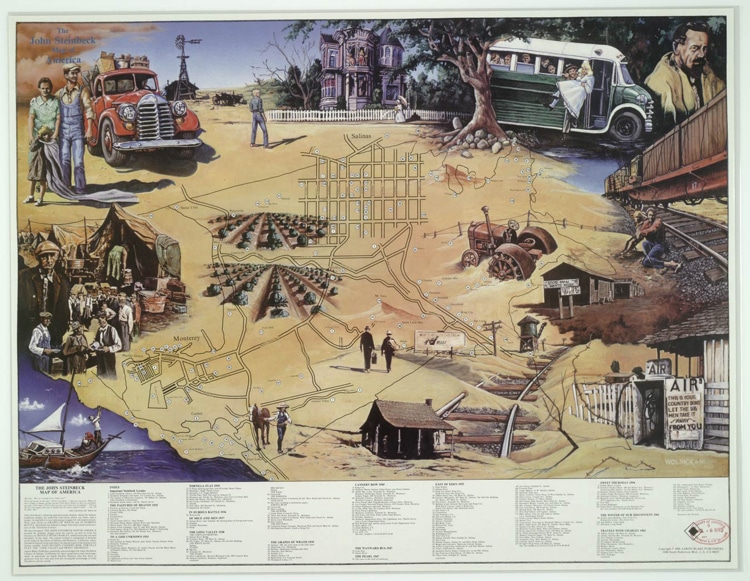
Molly Maguire: The John Steinbeck Map of America [exp. ed.] features popular images from Steinbeck’s novels such as Tortilla Flat (1935), The Grapes of Wrath (1939), and The Pearl (1947). The outline of the map shows the route of Travels with Charley (1962), and the central portion consists of detailed street maps of the California towns of Salinas and Monterey, where Steinbeck lived and set some of his works. Numbers on the maps are keyed to lists of events in Steinbeck’s novels … (American Treasures at the Library of Congress; Imagination).
Litteratur:
John Steinbeck. Af Elias Bredsdorff (Carit Andersen, 1942, 103 s., bibliografi, s.101-)
** om Det ukuelige sind, s.58-66: “… indtager en meget bemærkelsesværdig stilling i Steinbecks forfatterskab … en ejendommelig og god bog.”
Se omtale af anmeldelse af bogen i Arbejderbladet 29. september 1940 ved Aksel Larsen (i indskannet text af Morten Thing om Elias Bredsdorff 1912-2002).
Aksel Larsens kritiske kommentar til bogens ligger på linje med Bredsdorffs referat i ovenstående bog om John Steinbeck (side 63) “… skildringen af det kommunistiske partis virksomhed og taktik er forkert. Amerikas kommunistiske parti har i en offentlig erklæring taget afstand fra bogen … Mac, Jim, Dick og Harry er menneskeligt set gribende kynikere; de er blot ikke – hvad man maatte faa indtryk af ved at læse bogen – kommunister.”
sta_anchor id=”19020300″ /]
Marts 1902
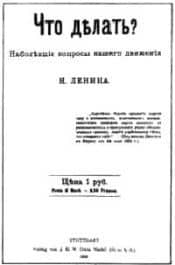
Lenins bog Hvad der må gøres: Vores bevægelses brændende problemer bliver udgivet. Bogen spillede en afgørende rolle for dannelsen af de russiske bolsjevikker.
Litteratur:
Lenin: Udvalgte værker. Bind 2. Tiden, 1979, side 19-237. Engelsk udgave: What Is To Be Done.
På dansk:
Hvad må der gøres?: Vor bevægelses mest nødvendige opgaver (V.I. Lenin: Udvalgte Værker, bind 2) (Marxisme Online).
In English:
- What Is to Be Done? (Wikipedia.org)
- Vladimir Ilyich Lenin: What Is To Be Done?: Burning Questions of our Movement (Marxists Internet Archive)
- V. I. Lenin: Preface to the Collection Twelve Years (1907) (Marxists Internet Archive)
Lenin’s What is to be Done? – a defence (pdf). By James O’Toole (Irish Marxist Review, Vol.4, No.13, 2015, p.46-60). “The book “is still controversial [and is] used to provide illustration, by conservatives and liberals alike, for the argument that Lenin was an ‘elitist’.”
Lenin Rediscovered: What is to be Done? in Context: By Lars T. Lih (Brill, Historical Materialism book series, 2006 / Haymarket Books, 2008, 867 p.). See contents and abstracts (Brill), and the book online at Universities of the Left.
Rediscovering Lenin (Weekly Worker, Issue 750, December 18, 2008). “Ben Lewis spoke to Lars T. Lih about his book … and some of the questions it raises for the left in understanding its own history and tradition.”
Reviews:
Party and class in revolutionary crises. By Charlie Post (Against the Current, No.150, January/February 2011)
Leninism for the 21st century. By Barry Healy (Green Left Weekly, Issue 825, 10 February 2010)
The myth of Lenin’s elitism. By Paul D’Amato (International Socialist Review, Issue 60, July-August 2008)
What was done. By Paul Blackledge (International Socialism, Issue 111, Summer 2006)
Origins of ‘Leninism’. By Mike Macnair (Weekly Worker, Issue 638, August 31, 2006)
Lih’s Lenin (John Molyneux Blog, November 10, 2006)
Symposium on Lars Lih’s ‘Lenin Rediscovered’ (Historical Materialism, Vol.18, No.3, 2010, p.25-174; online at Redatlanta.wordpress.com). Med bidrag af Paul Blackledge, Ronald Grigor Suny, Robert Mayer, Chris Harman, Alan Shandro, Paul Le Blanc og Lars T. Lih.
See contents and abstracts + This quarter’s selection (International Socialism, Issue 130, Spring 2011)
Scotching the myths (Weekly Worker, Issue 838, October 21, 2010). “Historian Lars T Lih dissects one of Lenin’s most famous but most misunderstood pamphlets.”
‘We must dream!’: Echoes of `What Is to Be Done?’ in Lenin’s later career. By Lars T. Lih (Links: International Journal of Socialist Renewal, June 2010). “Talk given at the Socialism 2010 conference, Chicago.
Emphasising democracy (Weekly Worker, Issue 546, September 30, 2004). “Hillel Ticktin looks at the lessons for today of Lenin’s What is to be done?”
The myth of Lenin’s ‘Concept of the Party’ or what they did to What Is To Be Done? (1990). By Hal Draper (Marxists Internet Archive). Printed edition in Historical Materialism (No.4, Summer 1999, p.187-213). “My focus here will be on WITBD itself, and on Lenin’s views and practices in the period between WITBD and the Russian Revolution.”
Se også:
Lenin, Bolshevism, and Social-Democratic political theory. By John Marot (Historical Materialism, Vol.22, No.2-3, 2014, p.129-171; online at Marxist Essays and Commentary). “A criticism of recent studies by Lars Lih.”
The real Vladimir Lenin. By John Marot (Jacobin: Reason in Revolt, November 6, 2016). “Ninety-nine years after the Russian Revolution, let’s free Lenin from distortions of all types.”
Om Luxemburgs Lenin-kritik etc.:
Lenin and Luxemburg through each other’s eyes. By Paul Le Blanc (Links: International Journal of Socialist Renewal, January 3, 2013)
Lenin, Rosa Luxemburg & det revolutionära partiet (pdf). Av Paul Le Blanc (Fjärde Internationalen, nr.2, 1992, s.101-115; online på Marxistarkiv.se)
Lenin and Rosa Luxemburg. By Max Shachtman (The New International, Vol.4, No.5, May 1938)
Luxemburg versus Lenin (1935). By Paul Mattick (Marxists Internet Archive)
Rosa Luxemburg or Lenin (1930). By August Thalheimer (What Next? Marxist Discussion Journal, No.7, 1998)
Organizational questions of the Russian Social Democracy Leninism or Marxism? (1904). By Rosa Luxemburg (Marxists Internet Archive). In Danish: Det russiske socialdemokratis organisationsspørgsmål (Rosa Luxemburg: Politiske skrifter: et udvalg. Redigeret af Toni Liversage. Tiderne Skifter, 1976, s.89-113)
(Reply by N. Lenin to Rosa Luxemburg) One Step Forward, Two Steps Back (1904) (Lenin: Collected Works, Vol.7, p.474-485, online at Marxists Internet Archive)
Se også på Socialistisk Bibliotek:
- Tidslinjen: 22. april 1870 om V.I. Lenin.
- Linkboxen: Lars T. Lihs Lenin-biografi
- Personlisten: Rosa Luxemburg (1871-1919)
- Emnelisten: Den Russiske Revolution 100 år
- Emnelisten: Den Russiske Revolution, fra februar – oktober 1917
[sta_anchor id=”19020326″ /]
26. marts 1902
Medstifter af Frihedsrådet og redaktør af dagbladet Land & Folk (1945-55), Andersen Nexø-forskeren og -publicisten Børge Houmann fødes i Fredericia. (dør 20.1.1994 i Århus). Illustration: fra udstilling på Frihedsmuseets modstandsdatabase
Se på Socialistisk Bibliotek
Linkboxen: Børge Houmann (1902-1994)
[sta_anchor id=”19020423″ /]
23. april 1902
Den islandske digter Halldór Laxness fødes som Halldór Guðjónsson i Reykjavík. (Dør 8. februar 1998, se denne)
[sta_anchor id=”19020728″ /]
28. juli 1902
Karl Popper, videnskabsteoretiker og filosof, fødes i Wien. (Dør i London 27. september 1994, se denne)
[sta_anchor id=”19020929″ /]
29. september 1902
Den franske forfatter Emile Zola dør i Paris. (Født i Paris 2. april 1840, se denne)
[sta_anchor id=”19021026″ /]
26. oktober 1902
Den amerikanske kvindebevægelses stifter, Elizabeth Cady Stanton, dør i New York City (født i Johnston, New York, 12. november 1815, se denne)
[sta_anchor id=”19021101″ /]
1. november 1902
Den antifascistiske norske (folkefronts-)digter Johan Nordahl Brun Grieg (Nordahl Grieg) fødes i Bergen, Norge. (Dør 2. december 1943 i allieret bombefly over Berlin). Forfatter til Ung må verden endnu være og skuespillet Nederlaget om Pariserkommunen. Hans digt “Kriengsatt av fiender” (fra “Til Ungdommen, 1936) er populær sang i fredsbevægelser mv. til Otto Mortensens melodi (1952), og blev en slags fælles hymne under arrangementerne efter Breiviks terrorangreb 22. juli 2011 i Norge.
Se herom: Linkboxen Terrorangrebet i Norge 22. juli 2011
Se:
Grieg, Johan Nordahl Brun. Af Helge Vold (Leksikon.org)
Nordahl Grieg (Denstoredanske.dk)
Nordahl Grieg (Wikipedia.no). Norsk leksikonartikel på bokmål med links til bl.a. tekster, biografiske artikler + fx Kim Larsens indspilning af “Kringsatt af fjender”.
Klassisk samtidsroman fremstår som hvidvaskning af Moskva-processerne. Af Hans Hertel (Politiken.dk, 6. april 2015). Anmeldelse af ny udgave af Nordahl Griegs “Ung må verden endnu være”.
Nordahl Griegs indsats for freden. Af Lars Ulrik Thomsen (Arbejderen.dk, 2. oktober 2014)
Strid om Nordahl Grieg. Av Edvard Hoem (Nrk.no, 20.12.2004)
En digter med handling bag ordene. Af Harald Rasmussen (Arbejderen, 1. november 2002; online via WayBackMachine)
Kriengsatt av fiender (Denstoredanske.dk)
Til Ungdommen (Wikipedia.no). Norsk leksikonartikel med link til hele teksten.
















